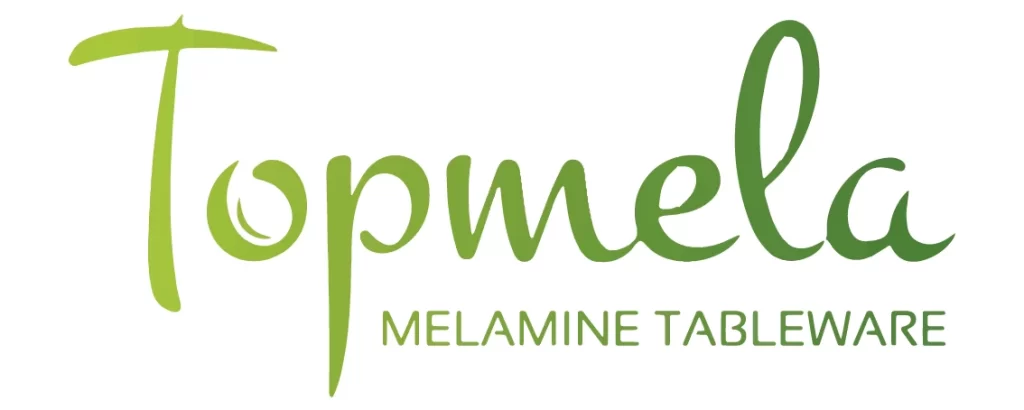Trying to decide if melamine dinnerware is right for your business? We answer common questions about melamine dishes to help you determine whether you should invest in melamine plastic products.
How Does Melamine Affect Presentation?
Bright, chip-free melamine tableware can improve your customers’ perception of your business. According to a third-party survey, plateware that is clean, bright, and chip-free improves diners’ overall perception of eateries. Participants did not state a preference for china, but agreed that paper plates are undesirable. Since china chips easily and consumers dislike paper products, durable melamine tableware is a practical solution. If you select a color or pattern that fades over time, melamine dinnerware is inexpensive to replace.
There are dozens of designer melamine lines created to mimic the look of fine china and other ceramic dinnerware. Available in both solid color and patterned designs, you will find the perfect high-end melamine dinnerware to match your restaurant theme. Because melamine is so versatile, you can get the same visually appealing presentation from melamine that you can from other materials like porcelain, china, or even slate.
Is Melamine Tolerant to Hot and Cold Uses?
Melamine plastic is tolerant to both hot and cold use. It holds temperatures longer than other types of plastic, but it also takes a long time for its temperature to change. This is because melamine is an insulator, not a conductor. Melamine will stay cool to the touch when serving hot foods because the food does not produce enough heat for a long enough period to change the temperature of the material itself. This protects restaurant servers and diners from burn hazards associated with hot plates and other servingware. Thanks to its heat-resistant properties, melamine is also great for kitchen tools used for handling hot soups and boiling water.
Because melamine is such a great insulator, it’s also ideal for cold food and buffet displays. Melamine food pans are perfect for deli displays, butcher shop cases, and salad bars. Place melamine in ice-filled containers to keep plated items cool at catered events.
Is Melamine Breakable?
Melamine dinnerware is extremely difficult to break, but there have been instances of chipping around the edges when it’s subjected to harsh use. Unlike typical china or porcelain, melamine will not shatter if dropped and is less likely to chip than other traditional dinnerware materials. Look for melamine dinnerware models with reinforced rims and feet for additional durability.
Where Is Melamine Used?
charcuterie board with green and red melamine dishes
Thanks to its durable, lightweight construction, melamine is a popular choice for a variety of commercial settings, like dining halls, daycare facilities, and assisted living communities. However, you can find designer melamine dinnerware that looks just like handcrafted ceramic for sophisticated restaurants. The low risk of breakage makes melamine plates an ideal choice for restaurants that serve appetizers poolside, on a rooftop, or at the beach. Wood-finished melamine serving trays are perfect for serving charcuterie because they have the same rustic appeal as a true wood board but are dishwasher safe.
There’s melamine tableware designed for just about every application, from contemporary catered events to Mexican restaurants. Melamine molcajete bowls have the same mortar and pestle look as traditional salsa and guacamole bowls, without the weight and expense. For your Chinese restaurant or hibachi grill, check out the traditional decorations that adorn our Asian-inspired dinnerware collection. From bistros to barbecue shacks, you can find melamine dishes that suits the decor of nearly any foodservice establishment.
Is Melamine Expensive?
When you compare melamine to traditional tableware, it is typically the most affordable option. The exact cost of melamine tableware varies by brand, design, and pattern. Because melamine dinnerware has a much lower replacement rate than china, investing in melamine dinnerware saves you money both up-front and long term. Melamine has an annual replacement rate of around 10 to 20%, where as china has a replacement rate between 50 and 150%. While china and ceramic dinnerware shatter when dropped, melamine’s durable construction stands up to use and abuse. No more replacing plates, cups, bowls, and other serving ware after every accident.
Can Melamine Be Recycled?
In most cases, melamine should not be recycled. It is categorized under Class #7 on the list of Plastic Resin Codes, placing it outside the more commonly used #1-6 classifications. Because of its heat-resistant qualities, recycling plants can’t melt melamine like other plastics. However, some plants can grind it down and use it as a filler for other plastics or wood composites. Ask your local recycling center for more details about how to dispose of your traditional melamine products.
